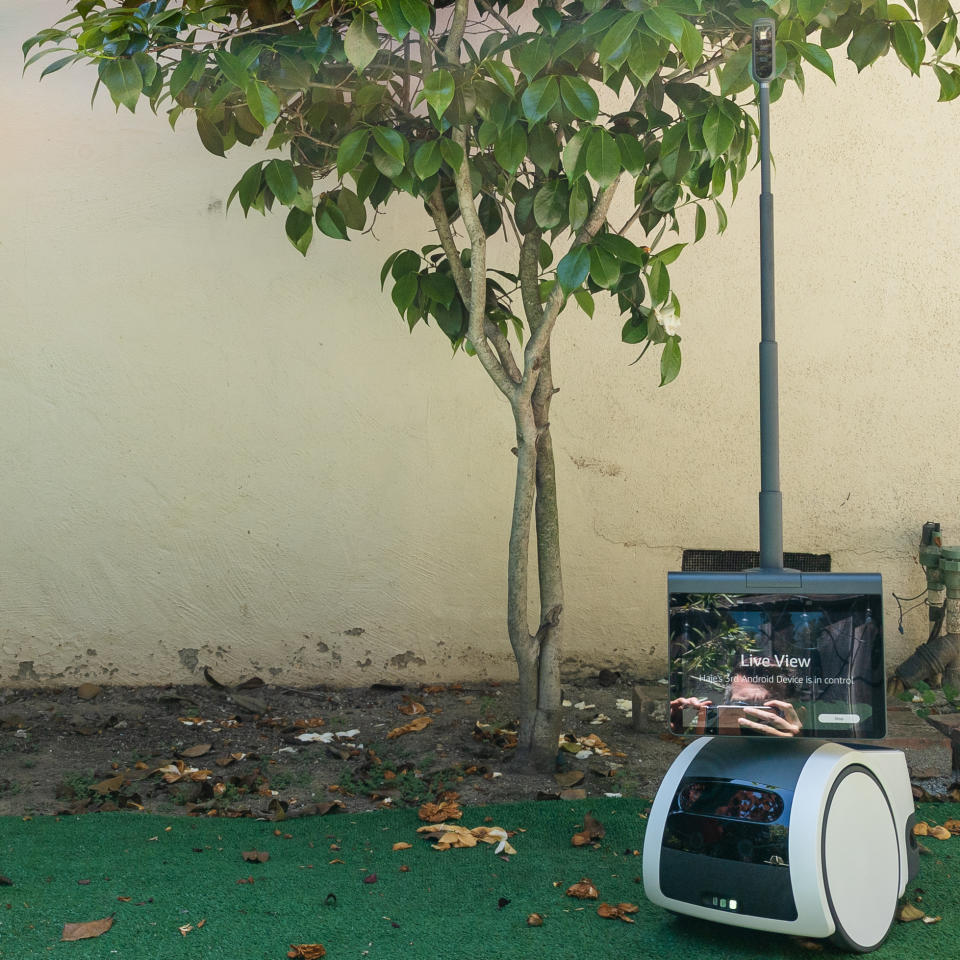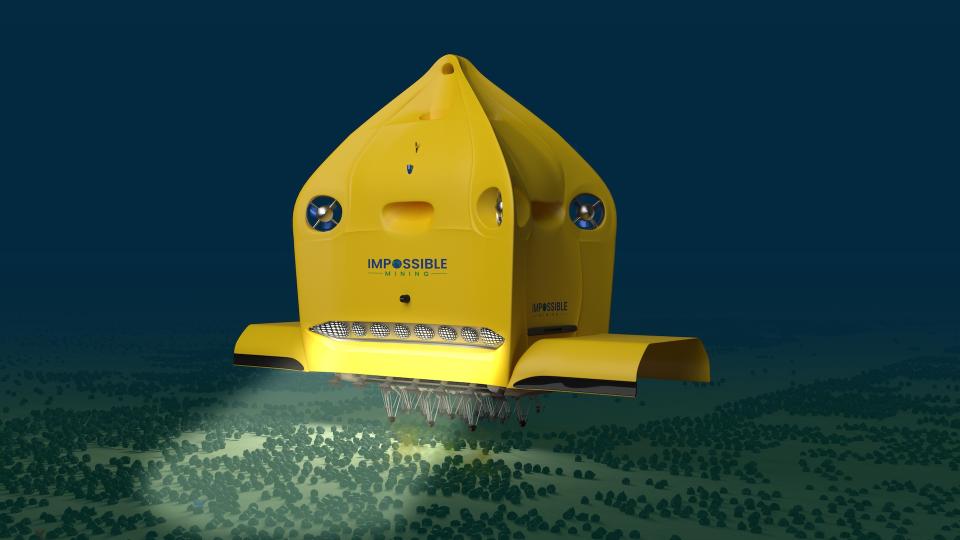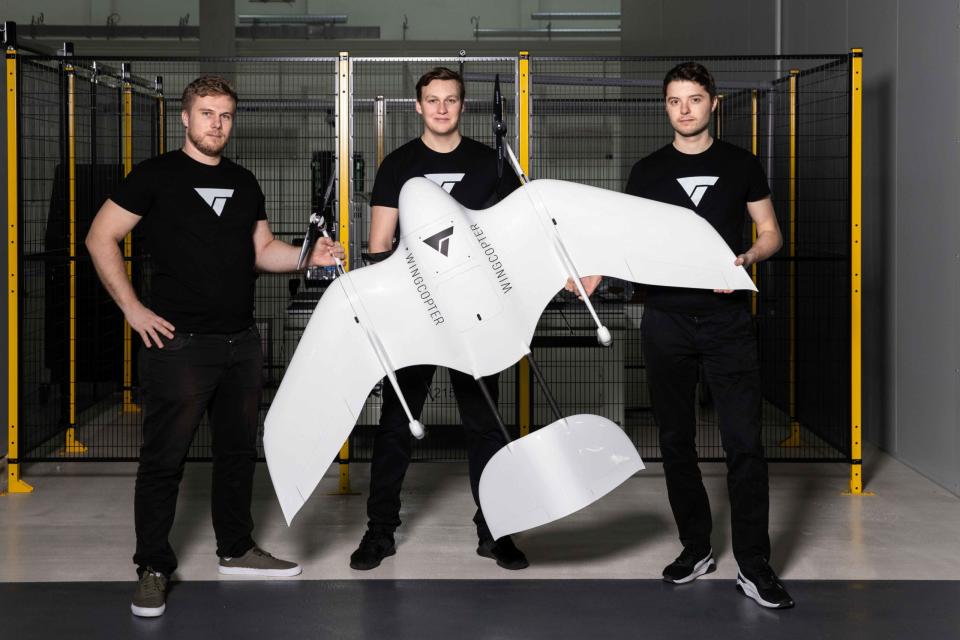A quick trip to MARS
Greetings from Las Vegas, where it’s 105 degrees outside, but it mostly doesn’t matter because you can’t figure out how to get outside. I’m here this week for my first-ever re:Mars. It’s wild being back in Vegas for the first time since January 2020, which hasn’t really changed but is somehow completely different.
I’m here mostly to chat with folks about AI and robots, and there’s thus far been plenty of both. During yesterday’s keynote, chief technologist Tye Brady debuted some of Amazon Robotics’ forthcoming robots, which will join the 520,000 or so it’s already debuted across its fulfillment and sorting centers.

Image Credits: TechCrunch
This year’s event was an opportunity to mark 10 years of Amazon Robotics, which effectively began life when the retailer acquired Kiva Systems, back in 2012. Kiva’s floor robots have served as a platform around which the company’s subsequent robots have been built. For that reason, it’s not really a surprise that the company chose the familiar form factor for its new autonomous robot, Proteus. Amazon notes:
Proteus autonomously moves through our facilities using advanced safety, perception and navigation technology developed by Amazon. The robot was built to be automatically directed to perform its work and move around employees — meaning it has no need to be confined to restricted areas. It can operate in a manner that augments simple, safe interaction between technology and people — opening up a broader range of possible uses to help our employees — such as the lifting and movement of GoCarts, the non-automated, wheeled transports used to move packages through our facilities.

Image Credits: Amazon
I have strong suspicions the system was an outgrowth of the company’s 2019 acquisition of Boulder, Colorado–based Canvas. The new robot’s autonomy level allows for far more flexibility in a wider variety of settings. I had the opportunity to interact with Canvas’s system before the acquisition and was impressed by its ability to effortlessly navigate in a hectic environment.
Astro is the other big first-party robot star of the show. The system represents an entirely new robotic endeavor for the company that exists separate from Amazon Robotics. Amazon is convinced home robots (beyond vacuums) are going to become mainstream in the next 5 to 10 years, and Astro is the first step toward that dream.

The periscope camera pops out and extends telescopically, enabling Astro to look over obstacles and on countertops. A very elegant design choice. Image Credits: TechCrunch
Last June, Ford’s CTO, Ken Washington, jumped ship to head up the Astro team. As he noted in the conversation, most of the hard development work was already done by that point, but the executive still has a lot of work cut out for him, if the company is planning to put an Astro in every home. Here’s an excerpt from my conversation with Washington earlier this week:
It’s quite a jump from automotive to home robots.
Well, it is and it isn’t. They’re both very sophisticated complex devices that consumers buy. And they both bring important services to people. The technology for doing autonomous mobility in the home is pretty similar to doing autonomy in a vehicle. It’s actually harder in many ways, because environments where a robot has to go in a home are a lot different. They are lighting rules of the road. You have all kinds of messy homes with different configurations, different lighting conditions, clutter on the floor. And then you have to have safety systems to ensure it doesn't fall down the stairs and do things like that. So it's a hard problem.
Is Astro an outgrowth of the Alexa team?
It really isn’t. We were really thinking about what would be true in the next 5 to 10 years in robotics. Is there going to be a robot in every home? We thought so, so we got to work on it. No one had pulled it off before. People had tried, but they couldn’t get the price point right or the functionality right, so we knew we had to do a lot of invention to get the economics and the functionality right. Integration with Alexa just came along as a natural thing to do.
Will Astro have general availability?
It’s too early to say. But I really believe this, and that’s why I left Ford to come here. I felt like this was really a big deal. People have been writing science fiction books about robots in homes for decades, but no one has been able to pull it off. Amazon told me they were going to pull it off.
As you said, a lot of people have attempted this. Why did you believe Amazon?
I asked all of the right, hard questions.
Such as?
How are you thinking about the sensor stack? How are you investing in ensuring that you can solve the hard problems of functionality in the home? Who do you have on the team to solve some of these hard, technical problems? What I learned is that we had assigned some of our top-notch AI experts and device hardware and software experts.
Is there cross-pollination with the Amazon Robotics team?
Not really. We know that team and we interact with them to share information and talk about science algorithms that apply to robotics in general. But the application of robots in a fulfillment center is sufficiently different than applications in the home.
Was navigation the hardest problem to solve?
There are so many hard problems. Intelligent navigation is in the top five. You can’t load this device up with tens of thousands of dollars' worth of sensors like you can in an autonomous car or a fulfillment robot, so you have to have really clever mobility models and an independent safety system. So that was a hard problem. Getting speech recognition in a device that’s noisy and moves is a hard problem. Recognizing faces in real-time and doing that visual perception on the device, because we don’t want to send that to the cloud is a hard problem.
What percentage of the technology was built from scratch?
It’s a very high number. We leveraged operating systems, of course. We levered our existing operating systems and a lot of our technology is built on top of ROS (robot operating system). It’s a variant. But it’s a really high percentage. Eighty to 90% was invented and developed ourselves, from scratch.
Is the price point where it should be?
We continue to look for opportunities to take cost out, as we look towards future variants of Astro. But we’re really proud that we’ve been able to put this together at the price point we have. We think it’s pretty remarkable. When we showed Astro to some of the experts in the robotic field, and we asked them, what they think it should cost. We got numbers much bigger than what we were able to put it together — $5,000 to $6,000.
There’s often a gulf between what you think it should cost and what people will pay.
But you know, the way we look at it is it's giving value commensurate with the cost. There’s no other product that you can put in your home that you can use to drop in and check in on your loved one, regardless of where they are in your house.
The largest complaint from reviews like ours has been a lack of functionality commensurate with the price. What do you think reviewers are missing?
I think it depends on the household. What we've learned is that Astro is most successful in busy households with kids and pets.
What does success look like for this product?
I would say we’re already very much on our way to success, but continued success is continuing to ship. Building on the momentum we’re creating into the product after Astro and having that be successful and building on it for the product after that. But one step at a time.
One other interesting tidbit from the conversation was a discussion about opening Astro up to third-party developers to help accelerate some of the robot’s functionality. “It’s not hard to imagine that one way to accelerate our development is to provide a development kit to engage our developers – both 2p and 3p developers,” Washington told me.
I referenced what Boston Dynamics has done with Spot as a potential analog. “They’ve opened up their APIs to developers, and that’s a smart thing to do,” Washington added. “It’s pretty natural to first do it for yourself and open up an API, an SDK. That’s not an uncommon technique. The difference here is our platform is at a very affordable price point.”

Image Credits: Ariel Ekblaw, photo courtesy of Felix Kraemer
A bunch of fun research stories out of MIT this week, so let’s knock out all at once, shall we? Not new news, exactly, but this escaped my radar until MIT Space Exploration Initiative director, Ariel Ekblaw, took to the re:Mars stage this week. TESSERAE — that's (deep breath) Tessellated Electromagnetic Space Structures for the Exploration of Reconfigurable, Adaptive Environments — is a self-assembling geodesic robotic dome designed to foster a more flexible and modular space habitat for humans. A team of MIT graduate students are currently prototyping and testing the technology. The school writes:
TESSERAE will function as multi-use, low-cost orbiting modules that supply a critical space infrastructure for the next generation of zero gravity habitats, science labs, staging areas for on-surface exploration, and more. TESSERAE should be thought of as flexible and reconfigurable modules to aid in both small-scale, agile mission operations and grand-scale, iteratively expanding space architecture.
This week CSAIL showed off RoboCraft, a project that teaches robotic hands to form Play-Doh into shapes, using visual cues.
“While there’s been recent advances in manipulating clothes and ropes, we found that objects with high plasticity, like dough or plasticine — despite ubiquity in those household and industrial settings — was a largely underexplored territory,” paper author Yunzhu Li said in a release. “With RoboCraft, we learn the dynamics models directly from high-dimensional sensory data, which offers a promising data-driven avenue for us to perform effective planning.”
The team envisions this sort of technology being implemented in some manner of future eldercare robot.

Image Credits: MIT
Another team at the school has developed small, flying robots with soft muscles and electroluminescence. Drawing inspiration from fireflies, the little drones emit light that can be used to signal people in an emergency scenario.
“If you think of large-scale robots, they can communicate using a lot of different tools — Bluetooth, wireless, all those sorts of things,” the paper’s lead author, Kevin Chen, said in a release. “But for a tiny, power-constrained robot, we are forced to think about new modes of communication. This is a major step toward flying these robots in outdoor environments where we don’t have a well-tuned, state-of-the-art motion tracking system.”

Image Credits: Impossible Mining
At an after-party for last week’s TC Climate event (how was that only last week?), Impossible Mining CEO Oliver Gunasekara pulled me aside to discuss his YC-backed firm. The company, which is developing a robot to mine the ocean floor for battery metals, just raised $10.1 million.
“The US needs independent, secure access to critical battery metals,” Gunasekara says of the project. “We are excited to accelerate the production of our deep water robots with this injection of capital, and to prove to both regulators and stakeholders that we can achieve what dredge-based technology can’t — the preservation of the seafloor environment.”
Some new numbers from ABI Research this week point to significant growth for last-mile delivery robots in the next 8 or so (well, 7.5) years. The research firm projects that the industry will grow globally from its current $70 million to $670 million by 2030. Pulling back even further, it points to a potential $3.3 billion in value for all parcels delivered by autonomous mobile robots in that same timeframe.

*** Freigegeben für die Berichterstattung über das Unternehemn Wingcopter bis zum 25.01.2026*** Mit Bitte um Urhebervermerk*** v.l.: Jonathan Hesselbarth, Tom Plümmer und Ansgar Kadura von Wingcopter GmbH. Image Credits: © Jonas Wresch / KfW
Seems an Actuator can’t go by without a couple of drone stories, and we’ve got a pair to wrap us up this week. First is a $42 million raise for Germany’s Wingcopter. As we noted in a recent edition, the startup has some fairly grand ambitions for Sub-Saharan Africa, with plans to deploy some 12,000 drones for delivery purposes over the next 5 years. incidentally, 12,000 is also the number of grocery stores its retail partner, REWE, currently operates across Europe.
Here's co-founder and CEO Tom Plümmer:
At Wingcopter, we create efficient and sustainable drone solutions to save and improve lives. For this, we are hiring passionate pioneers who build what has not existed before. The new funding, combined with growing revenue, puts us in an excellent position to roll out our industry-leading drone delivery solution with our customers around the globe.

Detroit Aerotropolis and Airspace Link partnered together to showcase drone delivery technology coordinating delivery of snacks and beverages on a local golf course. Image Credits: Zing Drone Deliveries
Lastly, Devin’s got a piece up about the Airspace Link drone tracking platform, which just raised $23 million. CEO Michael Healander tells TechCrunch,
The drone industry for beyond line of sight, things like food delivery, have been held back by this. We all know drones can do these things, but integration in the national infrastructure isn’t there. Operators are building their own systems to prove they have radar and surveillance systems, to calculate the probability of crashing on people, on critical infrastructure . . . you have to build a safety case to the FAA.
Don't forget to register for our 100% TC Sessions Robotics online event.

Image Credits: Bryce Durbin/TechCrunch
Subscribe to Actuator today. It's like four days in Vegas without the 105-degree weather and indoor smoking.

 Yahoo Finance
Yahoo Finance 